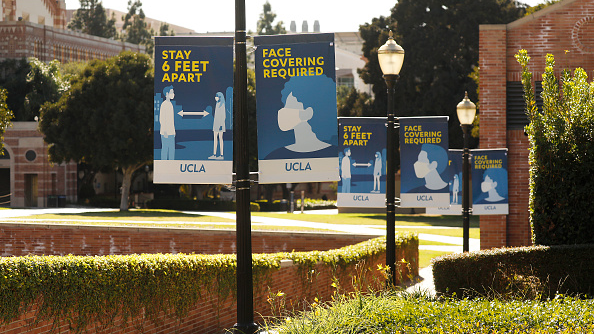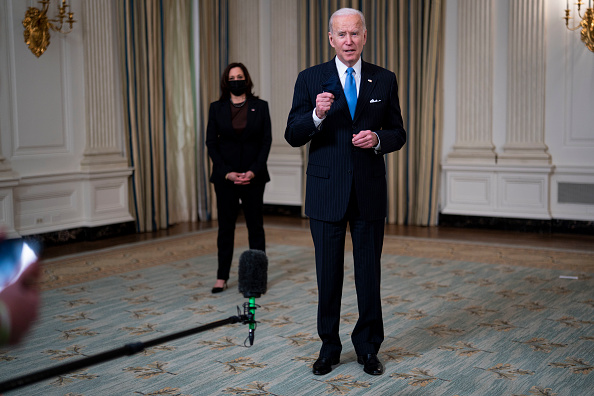
The campus of the University of California, Los Angeles, U.S. /Getty
The campus of the University of California, Los Angeles, U.S. /Getty
Editor's note: Azhar Azam works in a private organization as a market & business analyst and writes about geopolitical issues and regional conflicts. The article reflects the author's opinions and not necessarily the views of CGTN.
It's not just the economic crisis that has stunned the U.S., the world's biggest economy is also embroiled in rising student loan debt, which has reached a scary figure of about $1.7 trillion or even more. The situation alarms Washington as it is now the second-highest consumer debt category behind the mortgage and exceeds credit card and auto loans.
COVID-19 is not the only factor that has mired 45 million borrowers in an inescapable debt trap. Even before the pandemic upended the U.S. economy, more than 25 percent of American borrowers were unable to pay off their loans over growing economic inequality and states' disinvestment in higher education, with women bearing the brunt of the total volume.
Roughly one in five adults in the U.S. holding student loans has been behind on payments, including a disproportionate number in the black community. The challenge turned out to be intergenerational as one in 10 Americans reaching the age of 40s and 50s were finding it hard to settle their dues, buy a house, start a business or save money for retirement.
The tag price, including tuition and boarding and lodging, is very high in the U.S., up to $75,000 per annum for a four-year degree program in private and $30,000 at public institutions. This huge cost, accompanied by the racial wealth gap, restricted 44 percent of adults earning less than the median to resume study beyond high school.
Even U.S. lawmakers have to borrow and get defaulted on student loans or face threats of disqualification for running state office on personal debt. Some of them believed it was easier to become the youngest Congresswomen in American history than to repay student loans.
Fearing educational future at risk, Generation Z and Millennials – young voters who started their education at the peak of the Great Recession – voted Joe Biden in flocks on his promise to blow off some steam from intensifying debt and cut down on higher education costs.
During his campaign, Biden pledged $10,000 in debt forgiveness, provide affordable education and make public colleges and universities tuition-free for all families having income below $125,000. But the Democrats want him to cancel up to $50,000 per buyer to alleviate the anxieties of struggling students. Biden disagrees and says it would be erasing "the billions of dollars in debt for people who have gone to Harvard and Yale and Penn (University of Pennsylvania)."

U.S. President Joe Biden speaks to reporters after delivering remarks in the State Dining Room of the White House in Washington, D.C., March 2, 2021. /Getty
U.S. President Joe Biden speaks to reporters after delivering remarks in the State Dining Room of the White House in Washington, D.C., March 2, 2021. /Getty
However, the U.S. president wasn't valid as just 0.3 percent of the borrowers attended Ivy League colleges, and only three percent of Harvard students took Financial Aid & Debt from the federal government.
The Biden administration's massive $1.9 trillion stimulus package may support the economy to prevent a complete economic downturn, yet the "American Rescue Plan" doesn't extend any direct student loan relief. In its place, the president has asked the U.S. Justice Department to review his authority to cancel the student debt through an executive order, hinting at a possible retreat from his assurance.
Even though student debt is climbing all over the world, but considering average loans in the U.S. is around $36,000 compared to $2,400 in Germany, it is dubbed as a breaking point in the country. With millions of workers losing their jobs due to the pandemic, their inability to ante up the mortgages and credit card loans has bewildered Americans. The U.S. total household debt, including mortgages and student loans at the close of 2020, had ballooned to a staggering $14.56 trillion.
A pragmatic approach that can help the Biden administration to control the worsening debt crisis is by improving the U.S. trade ties with the world's second-largest economy, China, where the pent-up demand has assisted Japan to increase its exports by 37.5 percent in January against 4.8 percent and 1.6 percent drop to the U.S. and European Union respectively.
But the latest report from the U.S. Trade Representative uses "all available tools" against China's alleged unfair trade practices, and coercive technology transfers give a touch of the former Trump administration's assertive and confrontational China policy. The new U.S. administration should not spice up the toxic Trumpist malady in an effort to distract Americans from real domestic issues.
After a trying 2020 that has washed away millions of jobs from the U.S. market, the beleaguered Americans expect Biden to eliminate inequalities, restore jobs and stabilize the national economy through a balanced domestic strategy and indiscriminate international cooperation, allowing them to escape from an endless debt cycle threatening to push them into poverty.
Rather than inviting more tensions, the White House should look to lift tariffs on Chinese goods and revamp its trade relationship with China, which is helping Americans get back to work by increasing its imports from the U.S. by more than 17 percent or over $18 billion in 2020, according to official U.S. trade data.
The other important measure the Biden administration needs to consider is reestablishing people-to-people exchanges between the two sides. The direct contact would be crucial for American people and students since Chinese students contributed about $16 billion to the U.S. economy in 2019, and real estate purchases by Chinese that benefit the U.S. students in 2018 reached $30 billion but are dying away over uncertainties of Chinese students' future as a consequence of China-U.S. frictions.
(If you want to contribute and have specific expertise, please contact us at opinions@cgtn.com.)

